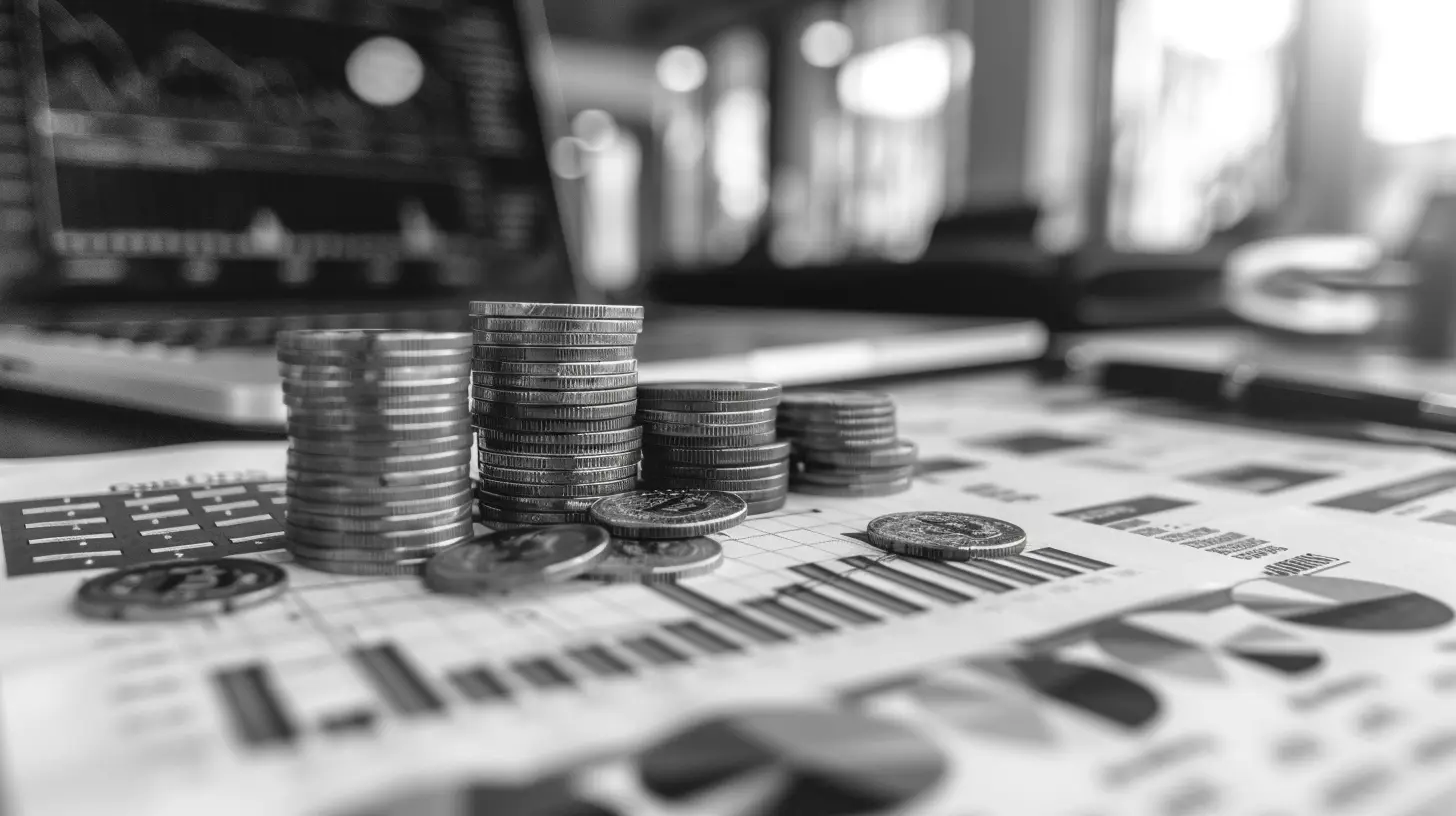Understanding the Cost Approach to Business Valuation
22 October 2025
When it comes to putting a price tag on a business, people often think of profits, brand reputation, or customer loyalty. But there’s another lesser-known method that’s practical, straightforward, and incredibly useful in certain situations—the cost approach to business valuation.
If you're scratching your head and wondering, "What’s the cost approach, and why should I care?", you're in the right place. Whether you're a business owner, investor, or just someone curious about how companies are valued, this article will walk you through what the cost approach is, when to use it, its pros and cons, and how it all comes together in the real world.
What Is the Cost Approach?
Let’s start simple.The cost approach to business valuation is basically figuring out how much it would cost to recreate (or replace) a business from the ground up. Think of it as asking, “If I had to build this exact business tomorrow, what would it take?”
This method looks at the value of a company’s assets minus its liabilities. That’s it in a nutshell.
It’s a bit like valuing a house by asking, “How much would it cost to build this same house today, brick by brick, and then subtracting any damage or wear and tear?”
So, if a business isn’t generating profit yet—or isn’t profitable at all—this approach can still tell you what the physical, tangible value of the company's infrastructure and equipment is worth.
When Is the Cost Approach Most Useful?
Not every business fits neatly into the same valuation box. There are different methods for different situations, and the cost approach has its sweet spots.Here’s when it shines:
1. Asset-Heavy Businesses
If the company owns a lot of physical stuff—think manufacturing plants, real estate, trucking companies, or construction businesses—the cost approach makes more sense. These businesses tie up a ton of money in equipment, vehicles, and property.2. Startups or Loss-Making Companies
If a company isn’t profitable yet, it's tough to use income-based valuation models like discounted cash flow (DCF). The cost approach gives a baseline value based on assets, which is still useful for investors and owners.3. Liquidation Scenarios
When a company’s being sold off piece by piece—like in a bankruptcy or closure—the cost approach gives a realistic sense of what its assets are worth if sold today.4. Insurance or Tax Purposes
Sometimes you need to assign value not for selling the business, but for taxes or insurance. Asset valuation provides a clear picture for those kinds of situations.
How the Cost Approach Works: A Step-by-Step Take
Let’s roll up our sleeves and look at how this actually works in practice.Step 1: Identify All Tangible and Intangible Assets
First, make a list. We’re talking everything the business owns—buildings, trucks, equipment, office furniture, computers, even software licenses and intellectual property, if they can be measured reliably.There are two types of assets that matter here:
- Tangible Assets – Physical, measurable things like machines, inventory, and buildings.
- Intangible Assets – Non-physical but still important, like patents, trademarks, or proprietary software.
Step 2: Determine the Replacement or Reproduction Cost
Two key terms here:- Replacement Cost: What it would cost to replace the asset with something new that serves the same function.
- Reproduction Cost: What it would cost to create an exact copy of the asset.
Most analysts lean toward replacement cost because it's more practical. For example, you're not going to rebuild a 1995 fax machine—you’d replace it with a modern scanner.
Step 3: Account for Depreciation and Obsolescence
Assets lose value over time. Machines wear out, tech becomes outdated, and buildings need repairs.There are three types of depreciation to consider:
- Physical Deterioration – Wear and tear from use.
- Functional Obsolescence – When something is outdated or inefficient.
- Economic Obsolescence – When external factors (like a market downturn) make the asset less valuable.
Subtract all this depreciation from the replacement cost to get the adjusted value.
Step 4: Subtract Liabilities
Now subtract all the business’s liabilities—loans, debts, pending expenses. This gives you the net asset value—basically, the cost-based value of the business.Formula Cheat Sheet
Here’s what it all adds up to:Business Value = Total Adjusted Asset Value – Total Liabilities
Yep, it’s that simple.
Cost Approach vs. Other Valuation Methods
Alright, time for a quick side-by-side. The cost approach isn’t the only method to value a business, so here’s how it stacks up:| Valuation Method | Based On | Best For |
|---------------------------|---------------------------|-----------------------------------------------|
| Cost Approach | Assets - Liabilities | Asset-heavy or unprofitable businesses |
| Market Approach | Comparable business sales | Businesses in active markets |
| Income Approach (DCF) | Future cash flows | Profitable businesses with stable earnings |
In short: the cost approach gives a solid floor value, but may not reflect a company’s earnings potential or market buzz. It’s important, but sometimes it's just one piece of the puzzle.
Advantages of the Cost Approach
Now that we’ve unpacked the basics, let’s talk pros.✅ Simple and Straightforward
It’s a pretty no-nonsense model. You’re valuing what the company owns and tweaking it based on depreciation. No fancy forecasts or speculative projections.✅ Useful for Non-Profitable Businesses
Just because a business isn’t turning a profit doesn’t mean it's worthless. The cost approach still uncovers its brick-and-mortar (or code and server) value.✅ Excellent Check for Other Valuations
Even if you're using another valuation method, the cost approach provides a great sanity check. It helps you avoid overvaluing a business just because it's trendy or has high growth projections.Disadvantages of the Cost Approach
Of course, nothing's perfect. Here are some drawbacks to keep in mind.❌ Ignores Future Earning Potential
A business might own very little in physical assets but make huge profits. Think tech startups or service-based companies. The cost approach undervalues these businesses.❌ Can Be Time-Consuming
Doing a detailed asset inventory, figuring replacement costs, and depreciation? It takes time and expertise—especially for complex or outdated equipment.❌ Doesn’t Factor in Intangibles Easily
Brand reputation, loyal customers, or a killer team—these are vital parts of a business’s value. And the cost approach struggles to put a reliable dollar tag on them.When the Cost Approach Backfires
Let’s say you try to value a consulting firm using the cost approach. They work remotely, don’t own much equipment, and their most valuable asset? Their brainpower.Here, the cost approach would paint a bleak picture. No big-ticket items, almost nothing to depreciate, and no real “assets” to subtract liabilities from. But in reality, the firm could be raking in millions per year. That’s a case where the cost approach falls flat.
Moral of the story? Use the right tool for the job.
Real-World Example: Applying the Cost Approach
Let’s say there’s a small manufacturing company up for sale. Here's a simplified breakdown:- Tangible Assets:
- Machinery: $1,000,000 (replacement cost)
- Factory building: $500,000
- Vehicles: $200,000
- Office equipment: $100,000
- Depreciation:
- Machinery: $400,000
- Factory building: $100,000
- Vehicles: $80,000
- Office equipment: $40,000
- Liabilities:
- Bank loan: $300,000
- Accounts payable: $100,000
Let’s crunch the numbers:
Adjusted Tangible Asset Value:
- Machinery: $1,000,000 – $400,000 = $600,000
- Building: $500,000 – $100,000 = $400,000
- Vehicles: $200,000 – $80,000 = $120,000
- Equipment: $100,000 – $40,000 = $60,000
Total Adjusted Assets = $1,180,000
Total Liabilities = $400,000
Cost-Based Business Value = $1,180,000 – $400,000 = $780,000
This gives you a clear, measurable valuation that makes sense from a capital investment point of view.
Is the Cost Approach Right for You?
Here’s the golden question—it depends.If you run or evaluate businesses that invest heavily in physical infrastructure, then this approach is your best friend. But if you're dealing with lean digital startups, the cost approach could seriously undervalue innovation, people, and profit potential.
So the cost approach is best used with a blend of common sense and context. It paints a realistic picture from the ground up—just make sure you’re not missing the sky while staring at the foundation.
Final Thoughts
Understanding the cost approach to business valuation gives you a solid foundation—literally and figuratively. It’s objective, grounded in reality, and incredibly helpful in asset-heavy or uncertain income scenarios.But like any tool in your business toolbox, it works best when used for the right job. So whether you're buying, selling, insuring, or just plain curious—putting the cost approach on your radar is always a smart move.
all images in this post were generated using AI tools
Category:
Business ValuationAuthor:

Amara Acevedo
Discussion
rate this article
1 comments
Zayden Hubbard
Thank you for this insightful article on the cost approach to business valuation! It’s a crucial topic for entrepreneurs and investors alike. Understanding these fundamentals can truly empower decision-making and enhance financial strategies. Looking forward to more valuable content from your blog!
October 24, 2025 at 11:07 AM

Amara Acevedo
Thank you for your kind words! I'm glad you found the article helpful. Stay tuned for more insights!


